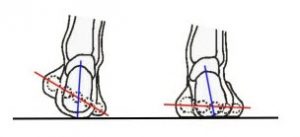Forefoot supinatus is a foot type that look very similar to forefoot varus and the two are widely confused with each other, especially those with a more limited in-depth understanding of foot biomechanics. Forefoot varus is a bony problem with the forefoot inverted relative to the rearfoot and is a cause of ‘overpronation’. Forefoot supinatus is also a foot type in which the forefoot is inverted, but it is a soft tissue contracture and is thought to be the result of ‘overpronation’. So despite having similar appearance, forefoot varus and forefoot supinatus are very different beasts. It is very common in Posterior Tibial Tendon Dysfunction.

If someone has a forefoot supinatus, then it is there for a reason, so to deal with it means identifying the reason and then treating that. If the ‘overpronation’ that caused the supinatus was due to a tight calf muscle, then all you can do is stretch it. If it was due to weak muscles, then things like the short foot exercise will help. there are many different causes, so many different approaches to the management and there is certainly on one-size-fits-all approach. Forefoot supinatus is a symptom and not the cause of the problem.
There is a lot of confusion around this. Often when people talk about forefoot varus, they are talking about forefoot supinatus while having no idea of the difference between the two. They are different beasts and have different interventions. Please do not fall into that trap.
{openx:878}